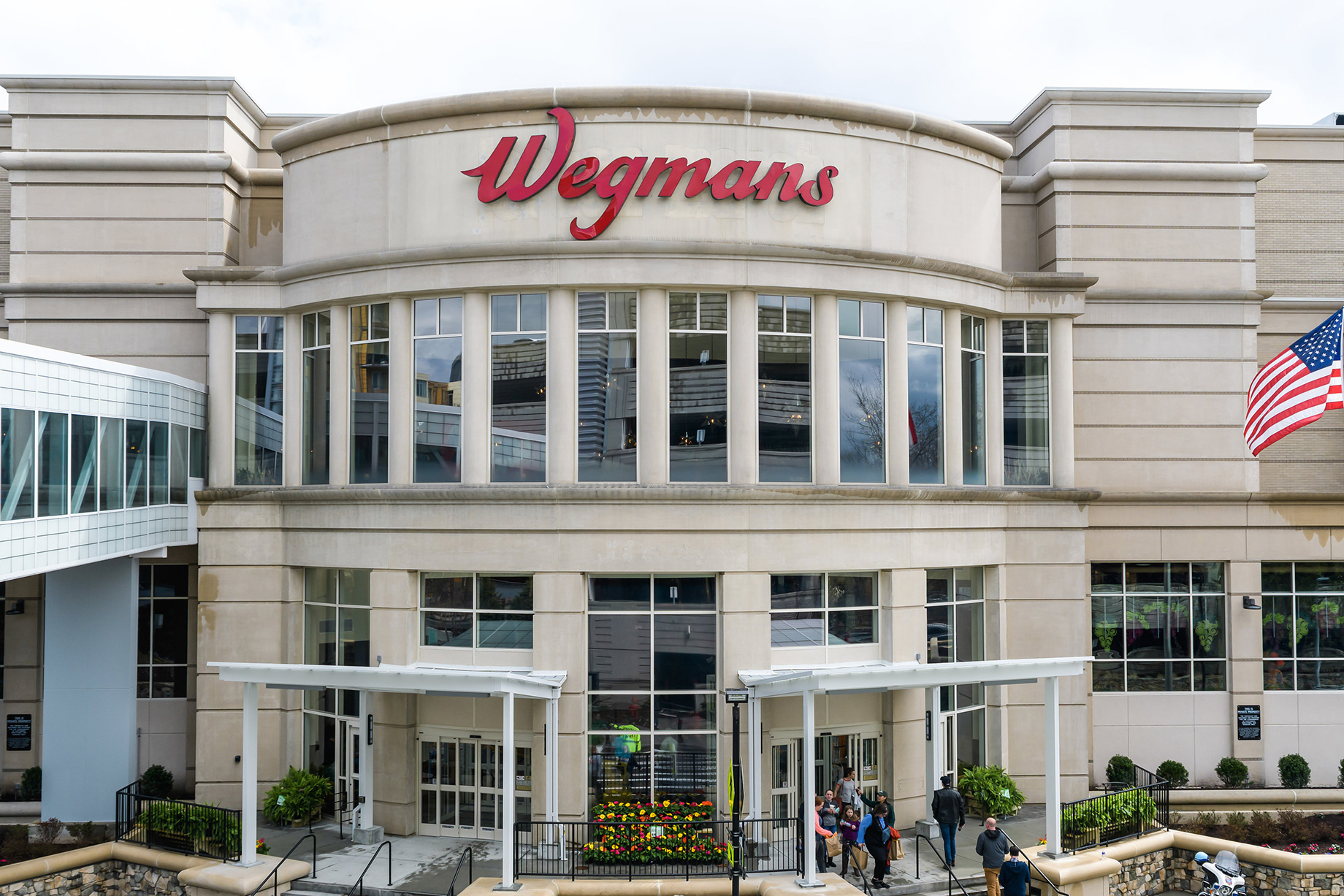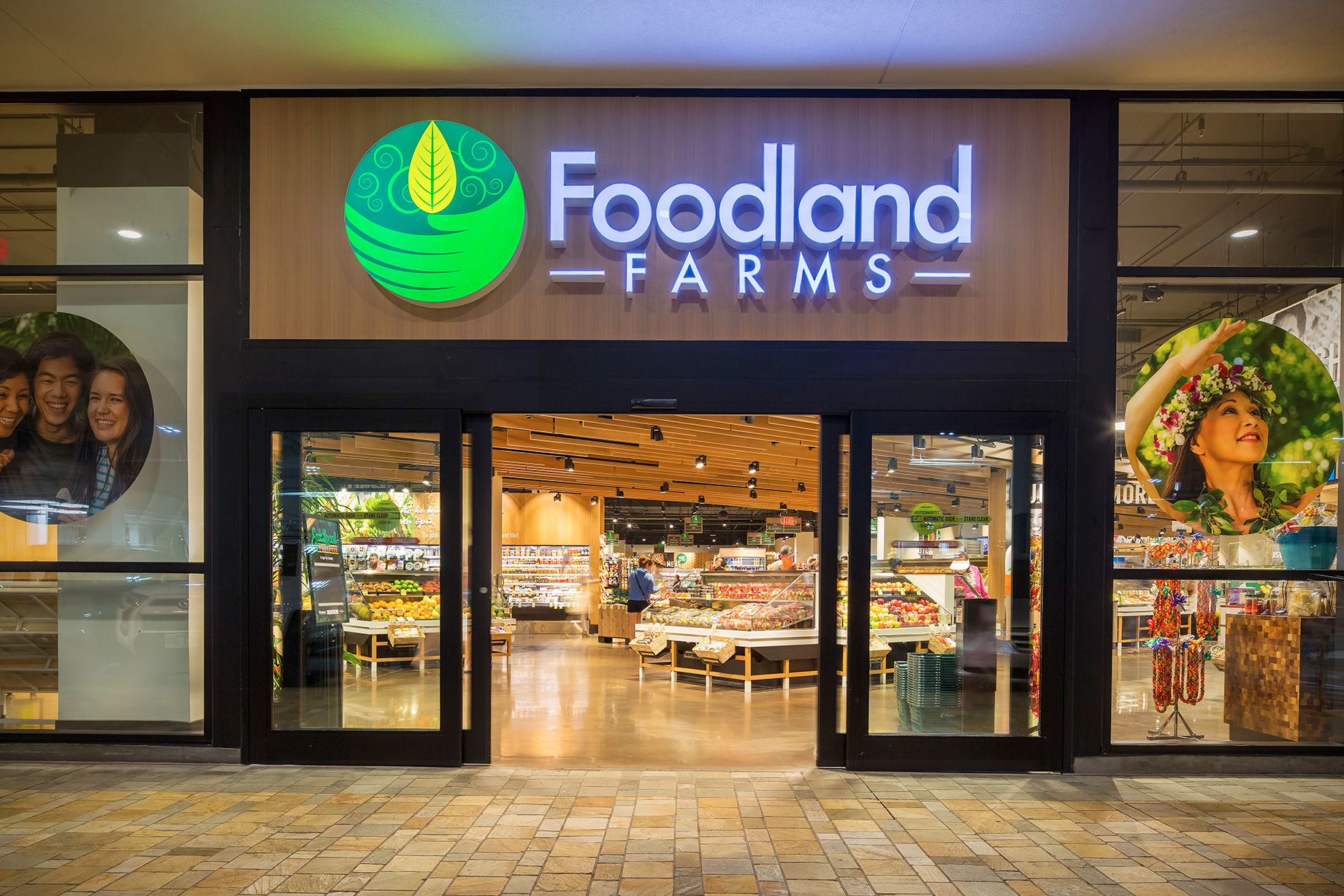A spate of high-profile deals between grocers and mall owners (and speculation about Amazon.com’s next moves in the food business) has refocused attention on the upside of grocers’ taking space at malls, observers say.

Whole Foods is taking the former Macy’s at Stonestown Galleria, in San Francisco
Such chains as Barons Market, Lidl, ShopRite, Sprouts Farmers Market, Stew Leonard’s, Wegmans and Whole Foods Market have signed leases with regional mall operators over the past several years. In many cases these supermarkets and specialty-food retailers are backfilling buildings once occupied by department stores.
“It is definitely a trend, and we’re going to see more and more situations where grocers open as part of regional malls,” said Stephen D. Lebovitz, CEO of CBL Properties. “Sometimes that will be in former anchor spaces; sometimes it will be in parking lots where there’s excess space. It’s market-by-market, depending on the supermarket and the competitive dynamics.”
“After analyzing all 900 of Sears Holdings’ boxes for potential suitability for conversion to grocery concepts, the researchers found that hundreds of available boxes could be of interest to expanding grocers”
At CBL’s Stroud Mall, in Stroudsburg, Pa., the owners of 30 ShopRite stores in the Northeast are redeveloping a vacant Bon-Ton store into an 87,000-square-foot ShopRite. The 60-tenant, 400,000-square-foot mall is located in the Pocono Mountains, where developable sites are scarce, Lebovitz notes. Not long after plans to close the mall’s Bon-Ton store were announced last year, the ShopRite operators approached CBL about a deal. “They had been looking in the area, and the mall real estate was the best available,” Lebovitz said. “We’re having several other conversations with grocers, and we feel these will materialize [into signed leases]. The supermarket operators are looking at the quality of the real estate. It is attractive to them.”
So far Brookfield Properties has backfilled three Sears stores at regional malls by doing grocery deals that are in various stages of development, according to Chris Pine, Brookfield’s senior vice president of big-box leasing and development. The three Sears replacements are a Lidl at Staten Island (N.Y.) Mall; a Stew Leonard’s at Paramus (N.J.) Park; and a Sprouts at Mt. Shasta Mall, in Redding, Calif. Moreover, Wegmans took the JCPenney box at Natick (Mass.) Mall, and Whole Foods is taking the former Macy’s at Stonestown Galleria, in San Francisco, Pine says.
In April researchers at Toronto-based BMO Capital Markets spurred further speculation about the role of grocers at malls, through a report titled Are Grocers Eyeing Sears’ Real Estate? An In-Depth Report Evaluating the Options. After analyzing all 900 of Sears Holdings’ boxes for potential suitability for conversion to grocery concepts, the researchers found that hundreds of available boxes could be of interest to expanding grocers. By their calculations, Amazon Whole Foods could show interest in any of 110 of the better-located former Sears or Kmart stores, and operators like Lidl or even a value-oriented Amazon brand could vie for any of 320 lower-tier Sears or Kmart boxes.

Wegmans at Natick ( Mass.) Mall, outside of Boston
James Sylvia, president of grocery-sector consultant firm Readco Sylvia Advisors, is skeptical of those findings. He has held top real estate and strategy positions at such grocery companies as Ahold USA, BJ’s Wholesale Club and Stop & Shop. “I saw that report, and I just don’t see it happening,” Sylvia said. “A super-regional player like Wegmans might take a few of the sites, but, by and large, the traditional grocers are not going to do that.” Generally speaking, local neighborhood sites are a better fit for traditional grocers than any real estate at malls, he says. “From a traditional grocer’s perspective, the regional malls — even some of the ‘A’ malls out there — are not really that convenient for the typical grocery shopping trip, which is still dominated by convenience even as e-commerce starts to make its way into the grocery sector,” he said. On the other hand, specialty operators like Stew Leonard’s, Wegmans and Whole Foods tend to draw from much-larger trade areas, which can make them a good fit for malls. “The Wegmans of the world — their customers are not so focused on immediacy and convenience,” said Sylvia.
However, when these deals do pencil out, the benefits for both grocery chains and mall owners can be tremendous, according to Pine. He cites the strong performance of grocery stores in Brookfield’s portfolio, such as the Costco at Cumberland Mall, in Atlanta; the Whole Foods at Fig Garden Village, in Fresno, Calif.; and the Fresh Market in a former Borders Books & Music space at Pinnacle Hills Promenade, in Rogers, Ark. Pine, who was a real estate executive for Whole Foods from 2000 to 2007, argues that grocers have been opening stores at malls for years now. “The opportunity is evolving, but bringing a grocery store to a mall is not a new concept, nor is it a reaction to having department-store boxes available,” he said. Pine brought Whole Foods into such malls as The Shops at Columbus Circle, in New York City, and into what is now The Outlets at Bergen Town Center, in Paramus, N.J.
Grocery chains open mall stores for one overriding reason, Pine asserts: the real estate. “If it is great real estate, it is great real estate,” he said. “Our real estate provides grocers the key ingredients for success, which is visibility, access and parking.”

Whole Foods at the Shops at Columbus Circle, in New York City
Pine points to the productivity of the Lidl store that opened last December in the former Sears box at Staten Island Mall. Because Brookfield had brought in such tenants as AMC, Barnes & Noble and Dave & Busters and had invested in a three-level parking garage and a 242,000-square-foot expansion, Lidl found the Sears space attractive. “Now it’s the number-one store out of the 65 stores Lidl has opened in the United States so far,” he said.
To be sure, though, obstacles can sometimes stand in the way of grocers seeking space at malls. During his years as a real estate manager for the California operations of a small-format value grocery chain, Michael Lagazo explored the viability of locating stores in such Southern California malls as Parkway Plaza, in El Cajon. With a site-acquisition budget of as much as $3.8 million per unit, Lagazo and his colleagues were responsible for sourcing about 30 sites per year. Mall projects, though, proved tough to pencil; the high cost of retrofitting and otherwise adapting to vacant department-store spaces was part of the problem, he says. “What a lot of folks don’t understand is that it’s not as simple as just substituting the department-store use with the grocery,” said Lagazo, today a San Diego–based vice president with SRS Real Estate Partners, of Dallas. “Back in the 1970s, Sears built these spaces as though they would never be used in any other way. There were structural columns every 30 feet, which Sears needed, to prop up its 154,000-square-foot, multilevel building. As a 23,000-square-foot operator, that was not ideal for us.”
In the case of Parkway Plaza, taking the Sears box would require leasing too much unusable space, Lagazo says. “We would have been paying for stairwells, storage areas, little corridors and receiving areas that weren’t needed,” he said. Given the notoriously thin margins and intense competition in the grocery sector, that was no small consideration. “It pushed us out of the window of our pro forma for a profitable site.”
“The higher cost of acquiring mall sites can erode grocery chains’ short-term profits in ways that trigger doubts about the deal”
When crunching the numbers on former department-store locations, grocers must factor in every possible cost, Lagazo says — not only potentially higher mall rents, but also the additional expense associated with running a more complex and time-consuming due-diligence process. For small-format grocers on the value end, due diligence can easily run $80,000 per day, he notes. “Anchor spaces are designed with loading docks that are more for TVs, apparel and appliances than perishable, packaged or frozen groceries,” Lagazo said. “That sounds minor, but with every adjustment — for construction and modifications, for permitting and entitlements — there’s a cost.”
The higher cost of acquiring mall sites can erode grocery chains’ short-term profits in ways that trigger doubts about the deal. “[Real estate] inventory is scarce and becoming more so by the day, so when large anchor spaces become available, everybody in the market takes a look,” Lagazo said. “Over the long-term, you may have the traffic you need, but if you are paying 40 percent or higher to acquire that mall site, it is a tough sell.”
Lebovitz, for his part, acknowledges that opening grocery stores at malls can take some doing. “There are use-specific challenges in terms of delivery and operating hours, the parking has to work, and supermarkets want visibility and easy access,” he said. “So there are certainly some operational challenges that need to be worked through.” Increasingly, though, mall real estate is evolving in ways that pique the interest of grocery chains, says Lebovitz. “At CBL we’re adding more mixed uses — office, fitness, hotels and, in some cases, residential — to our properties,” he said. “That feeds demand among supermarket chains.”

Foodland at Ala Moana Center, in Honolulu
Grocery chains can also be attracted to the steadily increasing population densities around certain regional malls, says Pine, pointing to Stonestown Galleria’s high-density location. According to the Brookfield website, roughly 83,000 vehicles per day pass by the mall, which is also accessible to seven transit lines, traveled by about 1.1 million commuters in any given month. And Stonestown is adjacent to San Francisco State University and its 30,000 students and 3,800 faculty and staff members. “We know the new Whole Foods that will open at Stonestown in 2020 is going to be successful,” Pine said. “It is a highly dense residential market, whether you’re talking about the one-mile or the five-mile ring. There are already a Trader Joe’s and a Target on-site that do very well.”
The Foodland grocery at Ala Moana Center, in Honolulu, likewise thrives as a result of high traffic and density, says Pine. The mall draws about 48 million shopper visits and generates nearly $1.5 billion in retail sales annually, according to Brookfield. “The close-in mix of the daytime and residential population at Ala Moana Center is very powerful,” Pine said.
Department-store closures will indeed continue to create opportunities for grocery chains to open stores at malls, says Sylvia. But the trend should be kept in perspective, he notes: By no means will grocers emerge as the sole solution to backfilling large-format vacancies at malls everywhere. “It’s case-by-case,” Sylvia said. “For many of the regional malls out there, particularly those that fall into the ‘B’ and ‘C’ categories, the highest and best use going forward is mixed-use redevelopments. If those malls can improve their local accessibility, grocers are likely to find them pretty attractive.”
By Joel Groover
Contributor, Commerce + Communities Today


